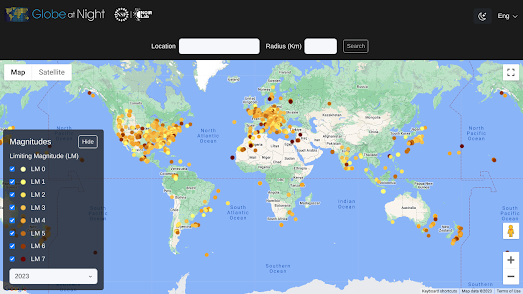The Sky at Night
The Globe at Night is a citizen-science project which is collecting global data on night sky brightness by asking people across the world to report on their local light pollution conditions. So far this year the project has managed to collect 277,423 observations from people around the globe.
To enter an observation you need to share your location with the Globe at Night and enter the date of your observation. You then need to observe a constellation and choose from a list of magnitude charts the representation of the number of visible stars that most closely resembles what you can see in the night sky.
You can explore the observations already submitted to the Globe at Night on this interactive map. The map uses colored dots to show the Limiting Magnitude scores recorded at each location. If you click on a dot you can learn the date of the observation and any comments given on the cloud and street lighting conditions. The darker the color of dot then the more stars were seen during the observation.
You can also explore the Light Pollution Map to find out more about light pollution in your country. This interactive map allows you to explore light pollution levels around the world night using VIIRS (infrared imaging) data collected by satellites.


Comments